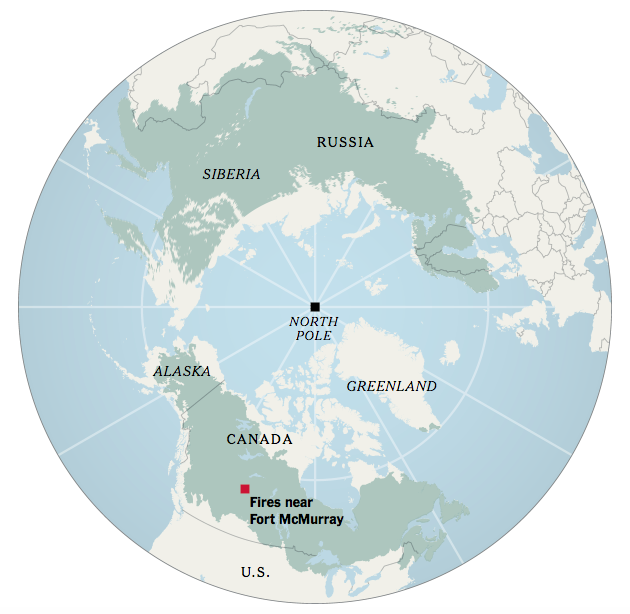 The boreal region stretches across the Northern Hemisphere through Alaska, Canada, Scandinavia and Russia. Boreal forests are increasingly affected by fire and climate change.
The boreal region stretches across the Northern Hemisphere through Alaska, Canada, Scandinavia and Russia. Boreal forests are increasingly affected by fire and climate change.
Sources: Natural Resources Canada; Alberta Agriculture and Forestry; U.S. Geological Survey; University of Maryland - By The New York Times
Scientists say the near-destruction of Fort McMurray last week by a wildfire is the latest indication that the vital boreal forest is at risk from climate change.
nytimes.com - by JUSTIN GILLIS and HENRY FOUNTAIN - May 10, 2016
Scientists have been warning for decades that climate change is a threat to the immense tracts of forest that ring the Northern Hemisphere, with rising temperatures, drying trees and earlier melting of snow contributing to a growing number of wildfires.
The near-destruction of a Canadian city last week by a fire that sent almost 90,000 people fleeing for their lives is grim proof that the threat to these vast stands of spruce and other resinous trees, collectively known as the boreal forest, is real. And scientists say a large-scale loss of the forest could have profound consequences for efforts to limit the damage from climate change.
Recent Comments